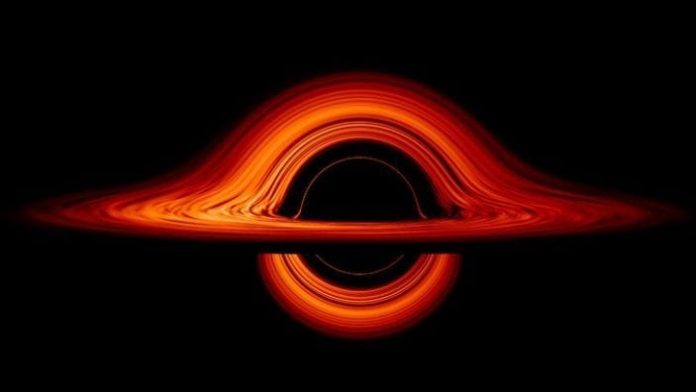
- A black hole is a region of space from which nothing, not even light, can escape
- Despite the name, they are not empty but instead consist of a huge amount of matter packed densely into a small area, giving it an immense gravitational pull
- There is a region of space beyond the black hole called the event horizon. This is a “point of no return”, beyond which it is impossible to escape the gravitational effects of the black hole
In order to distinguish between the two scenarios, the Hubble Space Telescope was pointed at the X-ray source to resolve its precise location. The telescope provided strong evidence that the X-rays emanated not from an isolated source in the Milky Way, but a distant, dense star cluster on the outskirts of a different galaxy.
This was just the type of place astronomers expected to find a mid-sized black hole. Dr Lin said the Hubble data made this the “most likely” explanation.
So-called supermassive black holes are commonly found at the centres of galaxies; for example, our own Milky Way hosts a massive central black hole called Sagittarius A*.
But intermediate-mass black holes have been particularly difficult to find because they are smaller and less active than the massive types. In addition, they don’t have as much nearby cosmic material to act as fuel, and lack the strong gravitational pull required to draw stars inwards to produce X-ray flares.
Astronomers effectively had to catch a mid-sized black hole red-handed – in the act of gobbling up a star.






















